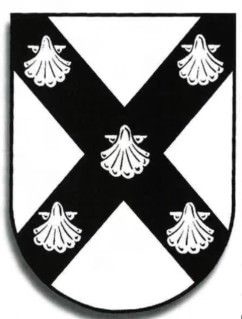The Connolly family are an ancient sept of Ireland’s western province of Connacht. The Gaelic form of the name is O’Conghaile. The original sept dispersed and in time three separate families developed based in Cork, Meath and Monaghan. However, the name is mainly found in Monaghan and in its native Connaught where it is sometimes spelled Connelly. There is also an unrelated name (Mc)Conneely, which is derived from a different root but can be confused with Connolly since it is also found in Connaught.
Among the famous Connollys must be mentioned James Connolly (1868-1916) who was born of Irish parents in the slums of Edinburgh in Scotland. He first came to Ireland as a member of the British Army at age 14. Deserting from the army, he became active in the Socialist and Trade Union movement and returned to Ireland as a trade union organizer in 1896. Having developed a name as a lecturer and writer he went to the United States in 1903 and stayed there for seven years, where he founded the “Wobblies,” the Industrial Workers of the World. Returning to Ireland in 1910 as a trade union organizer, he was one of the worker leaders in the famous labor “lock-out” of 1913. Arising from this he formed the Irish Citizen Army. In 1916, he helped in the preparations for the republican rebellion and was appointed military commander of the republican forces in Dublin. It was Connolly who was in charge of the General Post Office, the main stronghold of the rebels. He was badly wounded during the Rising and, as one of the seven signatories of the Proclamation of the Irish Republic, he was executed on 12 May 1916.
James Connolly’s republicanism and concern for the working classes would probably not have found much sympathy with his kinsman William Connolly (166?-1729) who was born in very humble circumstances in Donegal. William was, or became a Protestant and thus evaded the period of persecution which began for Catholics in the early 1690’s. He became a very wealthy man, although the origin of that wealth is not clear, and bought a great deal of land which was confiscated from the Jacobite supporters after the battle of the Boyne. He was also a member of the Irish Parliament and Speaker of the House. He is best remembered for the buildings he commissioned. These include his own residence, Castletown House, which is both the largest and most beautiful of the great houses of Ireland. It is now the headquarters of the Irish Georgian Society.
In the American War of Independence there were 243 Connollys among the members of the American Army and Navy. These included Captain Thomas Connolly of the Privateer Nancy of the Massachusetts Naval Service; Lieutenant Michael Connolly of the 5th Regiment New York Line; Captain Patrick Connolly of the Georgia Brigade and Captain John Connolly of the Philadelphia City Artillery.
Among the interesting American Connollys is Henry Connolly (1800-1866) born in Kentucky who, although a qualified medical doctor, went west and built up a significant trading business in New Mexico and became governor of the territory from 1861-1866.
Few people have had such an extraordinary upbringing as the sculptor Pierre Francis Connelly. He was born in Louisiana in 1841, to Pierre and Cornelia Connelly. His parents were Episcopalians who became Catholics of such fervency that his father became a priest and his mother a nun. His mother became the founder of the Society of the Holy Child Jesus in England shortly after his birth. Pierre’s early life was thus spent in a convent with his mother and he later went to live with his father, who was a priest in Rome. In 1850, however, his father renounced Catholicism and returned to the Episcopalian ministry in the United States.
Pierre studied at various art schools around Europe developing a significant name for himself as a sculptor. In 1876 he went to the United States and his works from this period are held in several galleries, including the Metropolitan Museum of Art in New York City.
Another religious kinsman is John Connolly (1750-1825). Born in Ireland, he became Bishop of New York in 1815. Also noteworthy is John Connolly (1794-1866), a medical doctor who practiced at Hanwell, in one of Britain’s major lunatic asylums. Under his direction the practice of physical restraint of lunatics ceased, and he is generally credited with the reform of the care of the insane which occurred in the mid-19th century.
Editor’s Note: This article was originally published in the August / September 1999 issue of Irish America. ⬥


Leave a Reply